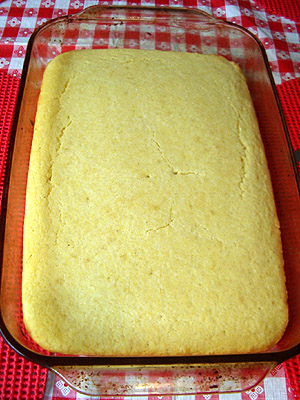
Cornbread is one of those things that people get attached to. REALLY attached to. There are dozens of cornbread recipes, and for each one there is someone who swears that that recipe is the best. No amount of discussion will convince them that the recipe their mother and grandmother made isn't the greatest cornbread in the world.
I'm not going to take sides here: leave it to other people to argue about whether Northern or Southern cornbread is real cornbread, or whether you should add sugar to cornbread. What I will do is introduce you to an extremely simple corn bread recipe and then explain how versatile cornbread can be. Once you have this basic cornbread recipe down there are no end of recipes you can derive from it.
Maize
It is well known that corn (also known as maize) is a grain first cultivated in America. What is less commonly known is that to this day scientists are puzzled by the origins of corn. Through genetic testing botanist have determined that corn is a teosinte (part of the Zea family of grasses) and was first cultivated in southern Mexico over 7,000 years ago. What they do not know is what inspired the domestication of corn. None of the surviving relatives of maize have anything resembling edible kernels, so it is believed that it took generations of breeding before an edible ear was developed. None of the intermediate species between the inedible grasses and the edible maize we are all familiar with have survived.
The Varieties of Cornbread
As I stated above, there are literally hundreds of cornbread recipes. Some include a mixtures of wheat flour and corn meal, others are made up purely of corn meal. Some include sugar, some include buttermilk, and others include whole pieces of corn.
The recipe below is as generic as possible: it produces an extremely simple, tasty loaf just waiting for your personalization. Some ideas of things you can do once you've got the basic loaf down:
- Southern style cornbread typically has more corn meal in it, even to the full exclusion of wheat flour. Try that or try the opposite: make a quick bread with only 20% of the grain being corn.
- Southern cooks also swear that buttermilk is essential to authentic Southern cornbread, as is the omission of sugar.
- Other fats than vegetable oil may be added. Butter or animal fats, such as bacon drippings, are most commonly used.
- Any number of things may be added into the loaf for flavor. Diced chili peppers are common, as are whole corn kernels. Meats, such as crumbled bacon bits, are also common.
- With an increase in the sugar you can make delightful blueberry cornbread muffins.
- Corn meal can also be substituted for a portion of the wheat flour in yeasted breads. I'd suggest beginning with no more than 20% of the flour being corn meal. If it turns out OK but leaves you craving more corn, bump it up the next time.
- Different grinds of corn are available. Standard corn meal is medium ground, but finely ground corn flour or coarse corn grits (often labeled as polenta) are also available and can be used to modify the texture of your loaf.
- White corn meal, blue corn meal, and yellow corn meal each produce different looking/tasting loaves.
- Bake it, steam it, fry it. Try them all.
Basic Corn Bread
1 cup corn meal
1 cup all-purpose flour
1/4 sugar
1 tablespoon baking powder
1 teaspoon salt
1 cup milk
1/3 vegetable oil
1 egg
Preheat the oven to 400.
Combine dry ingredients in one bowl, wet ingredients in another. Combine the two and mix until just blended. Pour into greased pan. Use and 8 x 8 pan if you like it fairly (2 to 3 inches) thick or 13 x 9 pan if you like it thin. I used a 13 x 9 pan for the loaf pictured here, which produced a 1 inch thick loaf.
Bake for 20 to 25 minutes or until a toothpick inserted into the center comes out clean. Remove and serve while still warm.
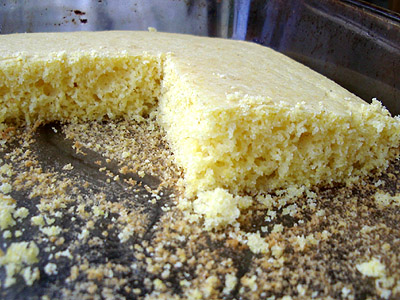
My family loves cornbread slathered with honey butter, which is just a mixture of 1 part honey and 2 parts softened butter.
This cornbread does not keep terribly well. A richer recipe probably would keep better, but I suggest eating this bread in the first 48 hours or else reusing it in another recipe, like stuffing or bread pudding (both of which it is excellent in).
Do you have a favorite cornbread recipe or other ideas for ways to modify this recipe? Please comment and share your ideas!






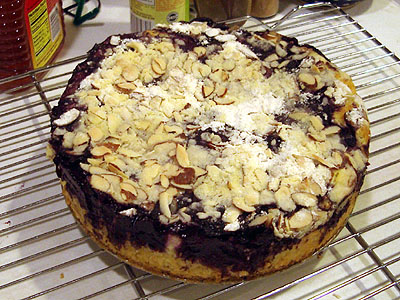
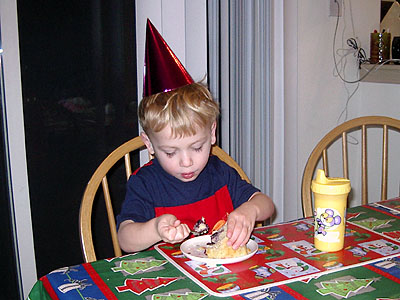
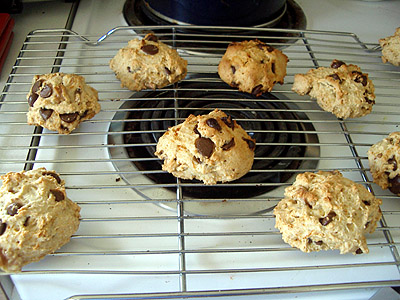




 If there is one book that I would recommend to an amateur baker interested in experimenting with artisan breads, Peter Reinhart's
If there is one book that I would recommend to an amateur baker interested in experimenting with artisan breads, Peter Reinhart's 